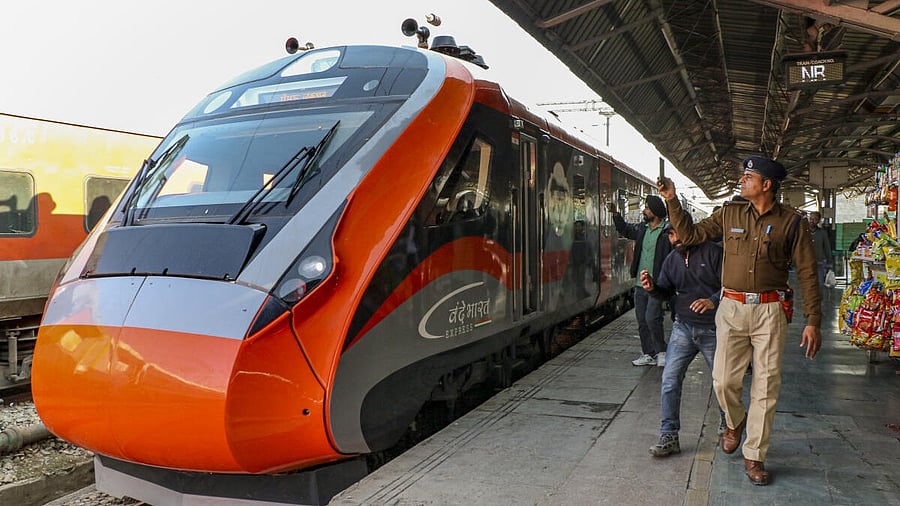
People click photographs of a Vande Bharat Express train, that will run on the Katra-Srinagar route.
Credit: PTI Photo
Srinagar: A long-cherished dream will finally come to life on Friday when the first-ever train from Katra rolls into Srinagar, marking a moment of profound historical and emotional significance for Kashmir.
On June 6, Prime Minister Narendra Modi is set to flag off the Vande Bharat Express from the Vaishno Devi base camp to the heart of Kashmir, inaugurating one of India’s most ambitious and technically challenging railway projects.
The 111-kilometre Katra-Banihal section, the final and most difficult leg of the Udhampur-Srinagar-Baramulla Rail Link (USBRL), will open for public use - closing the last gap in a railway dream that took root as far back as 1898.
A Maharaja’s vision, a nation’s commitment
The seeds of the idea were planted in the late 19th century, during the reign of Maharaja Pratap Singh. Faced with the isolation of Kashmir’s mountainous terrain, the Dogra ruler envisioned a railway line connecting Jammu and Srinagar. In 1905, after consultations with British engineers, he approved a narrow-gauge alignment via Reasi. But the vision was far ahead of its time, constrained by the challenges of terrain, resources, and colonial politics.
Fast-forward nearly a century. In 1994, the Government of India revived the plan under Prime Minister P.V. Narasimha Rao, laying out a modern, broad-gauge railway to connect Kashmir with the rest of the country. By 2002, the project was declared a “National Project” by the Vajpayee-led NDA government, ensuring central funding and top priority.
Engineering Triumphs in the Himalayas
Described by engineers as India’s most complex railway venture, the USBRL has pushed the limits of railway technology. The Katra-Banihal stretch cuts through some of the most treacherous Himalayan terrain, demanding over three dozen tunnels and dozens of bridges, including two that are engineering landmarks.
One is the world’s highest railway arch bridge over the Chenab River, towering at 359 metres—taller than the Eiffel Tower. The other is India’s first cable-stayed railway bridge over the Anji Khad. Together, they symbolise both technological prowess and the country’s resolve to bridge Kashmir’s geographical barriers.
The section also features India’s longest transport tunnel, T-50, stretching 12.77 kilometres between Khari and Sumber.
Decades of milestones
Over the years, the USBRL project has been executed in phases: Jammu to Udhampur was completed in 2005, followed by sections linking Qazigund to Baramulla and Banihal by 2013. The Udhampur-Katra link, vital for Vaishno Devi pilgrims, opened in 2014. The final track work between Katra and Reasi, including critical tunnel and bridge systems, was finished by the end of 2024, followed by trial runs earlier this year.
The overall cost of the project, initially pegged at Rs 2,500 crore in the mid-1990s, has now ballooned to nearly Rs 44,000 crore—owing to the scale, terrain, and safety considerations.
A landmark day for Kashmir
On Friday, as the train whistles into Srinagar for the first time, it will not just be steel on tracks. It will be the sound of history moving forward, a signal that Kashmir is now physically and symbolically connected to the rest of the country like never before.
For a region long accustomed to closed roads and disconnectedness, the arrival of a train carries hope. After 127 years, what began as a royal vision will finally arrive with the force of a nation behind it.